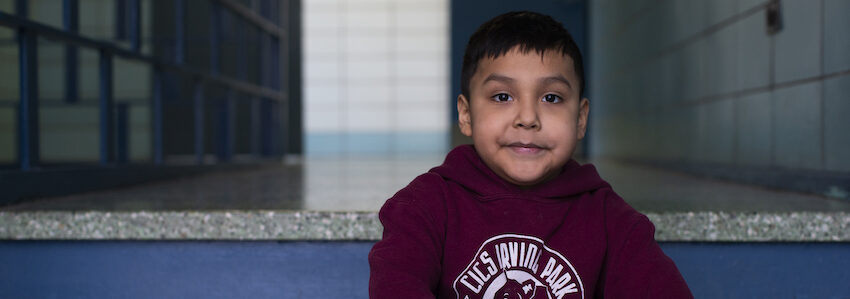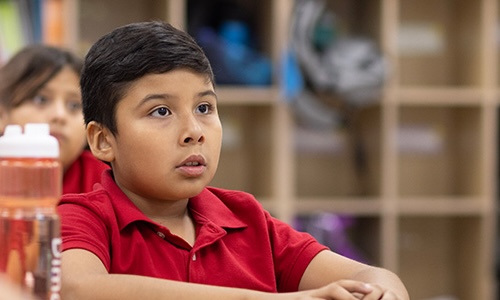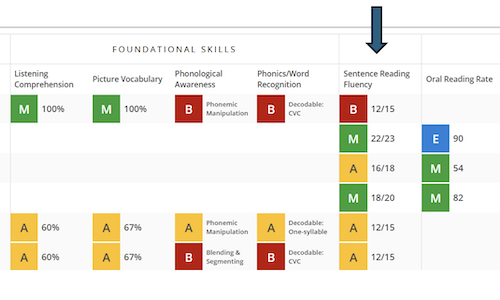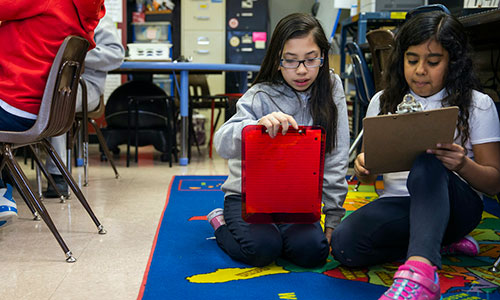
With the last vestiges of summer now shaken off, you’re probably starting to form the first real idea of who the students in your classroom are as people: what frustrates them, what makes them laugh, who they want to be, and what they want to do. This time of year can be exciting, as a class personality starts to truly take shape. It can also be overwhelming, with so many different inputs and so many decisions to make along the way. Goal setting is a tool that can help you and your students come together to organize all of those inputs and use them to craft an educational strategy that truly belongs to them.
If you’re at a MAP® Growth™ school, one of those inputs is each student’s fall MAP Growth score.
MAP Growth and goal setting
Using tools like the Student Profile report, you and your students can get a good idea of their overall academic strengths and weaknesses coming into this year. But setting a good goal for a student requires deeper insights into that student’s specific motivators, desires, and academic needs. MAP Growth can be a great tool for starting a conversation around a student’s goals, but it can’t be the only tool.
In my book Step into Student Goal Setting: A Path to Growth, Motivation, and Agency, I describe the key features of effective student goals and the information teachers and students need to set those goals. I also emphasize that truly motivating goals for students are individualized to the things they want to do and the people they want to be. A student is more than just a growth target: they are a learner who can be captivated by academic content if they understand the connection between that content and the lives they want to lead.
MAP Growth can be a great tool for starting a conversation around a student’s goals, but it can’t be the only tool.
From the pages of Step into Student Goal Setting
As you read the excerpt from my book below, consider the ways—big and small—you can incorporate student goal setting into your academic practice this year. Think about the times and places you can check in on students’ progress toward their goals.
“When it comes to learning targets and objectives, no two students start from the same place. Further, the best path for a student from their starting place to the ultimate goal may look very different. That’s why student learning is most directly impacted where teachers and students collaborate on goals that start from what they know today and focus on a target that is both reasonable and ambitious for them.
“There’s no doubt that setting individual goals for students is a big undertaking. There are, however, a few general principles guiding the process:
“Start with assessment data: When we sit down to plan a journey, whether a hike through the woods or a drive across the country, we start with two pieces of information: where we are and where we want to go. We figure out where students are by using assessments: formative and summative experiences that help us understand what students have learned and what they are ready to learn next. When identifying a student’s individual goal, assessment data can be a big help. Data from standardized assessments, for instance, can show a student’s achievement level relative to peers and how their future achievement level might compare at the end of the year. By using formative assessment, teachers can dive deep into student knowledge in a particular area of mastery, identify key misconceptions, and make targeting those misconceptions central to the journey (Heritage, 2010).
“Look toward mastery but understand how the path may shift: The end of the journey is a point we plot for all students: mastery, whether learning key content, grasping an academic construct, or meeting grade-level standards. Focusing our educational system on cultivating learners requires us to be clear about what students need to know to be successful in postsecondary education, a career, and their civic life. Setting our aspirations high is a key component of equity, ensuring that all students are given the opportunity to achieve at the highest potential. But focusing all attention on that goal for all students may be less helpful for those students who grow differently from the average learner. Setting the same educational goal for every student doesn’t make sense, because they’re all starting from different places. Further, effective goals address not only a student’s past and future performance but also their abilities, motivations, and available resources. Effective goals require keeping the ambitions of mastery in check with what’s realistic and reasonable for individual students.
“Keep goals short term: The key to balancing our ultimate goal of mastery with realism is setting frequently updated short-term goals, providing ample opportunity for students to celebrate as their learning improves. Short-term goals allow teachers to take advantage of what they know about students—their areas of strength, their interests, and their motivations—to organize learning in the way that best maintains the students’ energy toward a learning objective. Short-term goals should also support adapting instruction for students who are above grade level. These students can further their learning both by engaging in more complex tasks on grade-level content and by working with content above their grade level; the right mix of these practices is different for every student. Goal setting provides an opportunity to set a path through accelerated content that maintains high expectations while keeping students’ learning grounded in meaning.
“Balance choice with support: Goals are only individualized when students make real choices about their goals. Motivated and supported learners choose their own goals, understand what their goals mean, and play a central role in building the plan to achieve those goals. Research…shows clear benefits associated with helping students take ownership of the direction and focus of their learning. But just as students are poorly served by having their goals dictated from on high, they are also left ill prepared if they have to make every choice on their own without fully understanding what they have learned, what they need to learn next, and what resources are available to them to support that learning. Different students need different levels of support, depending on their age, maturity level, personality, and other factors. What matters most is making sure the final choice of a goal is the student’s, even if that choice is made from options the teacher has designed.
“These four ideas—all focused on how goals can be made relevant, meaningful, and appropriate to individual learners—are the animating force behind a goal-setting process that students are genuinely invested and interested in. Like any other good instructional practice, goal setting can easily become a form of compliance, another form in a sea of busy work that teachers ask students to complete. By demonstrating your interest in a student’s individual success, you extend to them an invitation to think about their learning and craft a plan that will help them be successful.”
Learn more about goal setting
To learn more about how you can get the most out of goal setting this fall and beyond, listen to my discussion with Amanda Thornton on our podcast, The Continuing Educator, or watch my webinar “Goals mean growth: Using student goal setting to jumpstart student motivation and success” on demand.







